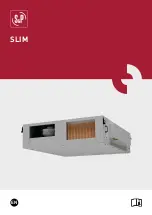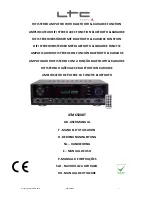
Page 16
For technical questions, please call 1-888-380-0318.
Item 63618
S
AFET
y
M
AINTENAN
c
E
B
ASI
c W
EL
d
IN
g
W
EL
d
IN
g T
Ip
S
SETUP
TIg Welding
TO pREVENT SERIOUS INJURy ANd dEATH:
do not weld without grounding clamp.
When the operator is not holding the Torch, it must be sitting on a nonconductive, nonflammable surface.
Only hold TIg Rod with an electrically insulated welding glove.
TO pREVENT dEATH FROM ASpHyXIATION:
do not open gas without proper ventilation. Fix gas leaks immediately.
Shielding gas can displace
air and cause rapid loss of consciousness and death.
Shielding gas without carbon dioxide can be
even more hazardous because asphyxiation can start without feeling shortness of breath.
NOTIcE:
TIG welding is a complicated process,
requiring experience and skill to achieve
successful results. Training beyond the scope of
this manual is required to TIG weld properly.
1. Open gas cylinder’s valve all the way.
2. Set Flow Gauge to SCFH value indicated
on Settings Chart on top of Welder.
3. Turn the Power Switch to the OFF position, then
plug the Welder into a properly grounded, GFCI
protected, 120 VAC (20 amp rated) outlet or 240V
outlet.
The circuit must be equipped with delayed
action-type circuit breaker or fuses.
4. Set TIG Torch down on nonconductive,
nonflammable surface away from
any grounded objects.
5. Turn the Power Switch ON.
6. Set amperage according to Settings Chart on top of
Welder.
Set to high end of amperage range.
For example: Range is 80-100A,
set amperage to 100A.
NOTE:
Settings are approximate. Adjust as necessary.
IMpORTANT:
If Welder is plugged into 120V outlet, set
amperage according to settings on white band.
If Welder is plugged into 240V outlet, set amperage
according to settings on orange band.
7.
Select process:
Press Process Select
Button until desired process(es) light up:
process
Select
Button
120V
Amperage
Settings
(white)
240V
Amperage
Settings
(orange)
TIg HF
High Frequency Start with Normal Welding
Usual way to initiate arc and weld.
and
TIg HF and TIg pULSE
High Frequency Start with pulse Welding
Usual way to initiate arc.
Pulse welding reduces heat input to minimize
distortion and allows for faster travel speeds.
WARNINg!
Metal work bench must be grounded
when using High Frequency Start (see High
Frequency Grounding on page 6).
NOTIcE:
When welding close to sensitive electronics
or on vehicles, use Lift Start instead of High Frequency.
TIg LIFT
Lift Start
with Normal Welding
Use when High Frequency Start cannot be used.
and
TIg LIFT and TIg pULSE
Lift Start with pulse
Welding
Use when High Frequency Start cannot be used.
Pulse welding reduces heat input to minimize
distortion and allows for faster travel speeds.
STIcK - go to Stick Welding on page 18.













































